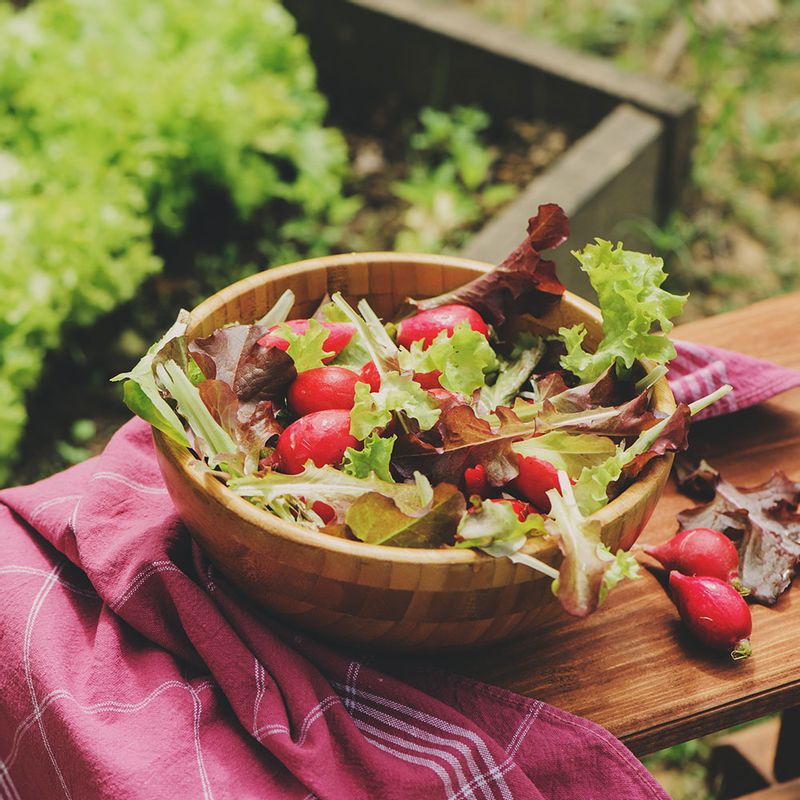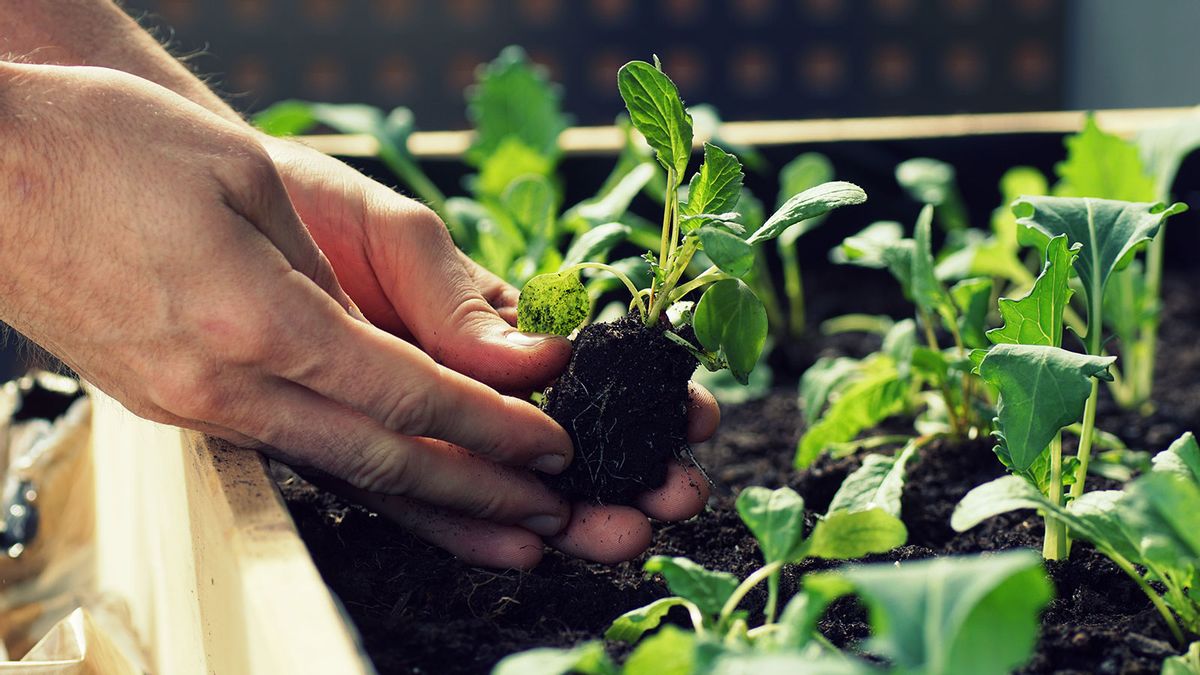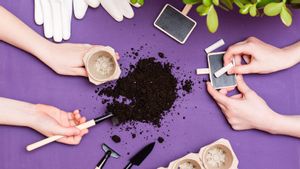If you are looking for a therapeutic activity to take up, other than cooking or the usual hobbies, give home gardening a shot. A morning cuppa in the comfort of your terrace garden or a couple of minutes spent by a lush windowsill can do lots to revitalize your spirits. What’s more, it is also the perfect opportunity to bring the outdoors in and align with today’s clean-living trend.
The growing shift towards plant-based diets, urban farming and zero waste kitchens, has urged many to nurture their green thumbs. This includes celebrities like Kareena Kapoor Khan who helps her toddler foster a love for plants along with hubby Saif Ali Khan or designer Vinita Chaitanya who finds calm and peace within the green expanses of her holiday home in Coorg, and Oprah Winfrey enjoys her time off in her garden, trying desperately to prop up a humongous cabbage she grew herself.
Discover a green new hobby
Gardening – as a hobby – witnessed a prominent uptick during the lockdown. And there are many reasons for it – shortage of essentials, availability of time, the stress of staying indoors or the general slowdown in lifestyles that we all experienced. To that end, growing your own microgreens or a few common veggies can go a long way.
“A generous dose of green increases oxygen levels, improves concentration and reduces mental fatigue. It also visually livens up a space and is therapeutic to look at. Gardening is an immersive hobby, so it’s a great way to keep oneself busy, remain positive and maybe, even manage to grow some food. If you tend to your garden yourself, the progress that you’ll notice every day is extremely satisfying – each new leaf, each new flower, is a thing of great joy,” explains Komal Garg, of Plant People, an online nursery and plant deco venture that she co-founded with her husband Angud Bhalla.
Growing fans of gardening

Garg, however, is not alone. People from the ever-expanding food community in India have, too, come out to share their love for gardening, such as Bengali home chef Iti Mishra or food writer and director Shubhra Chatterji.
Chatterji’s love for gardening can be traced back to her childhood spent in Africa. “We had a subject called agriculture science, and the school had its own patches,” she remembers. Before the lockdown could begin, Chatterji had flown back to Bhopal to live with her parents. There, her mother’s verdant garden grew to become the room she never had, considering that she spent most of her teen years living alone, away from her parents.
“For my mother, plants are like memory keepers. For example, at my wedding, four banana stems were required to don the mandap. She brought them home and planted them. It has now bloomed into a massive tree that reaps huge bunches of bananas,” she shares.
Spiritually uplifting hobby
As Chatterji learned to find solace and satisfaction in her mother’s home garden, picking up tricks and trades as she went, Tara Deshpande tended to her home garden in Mumbai with renewed gusto during the lockdown. Deshpande’s love for the hobby germinated from her grandfather’s passion for gardening. The actor-turned-chef spent many summers on his verdant farm in Belgavi, learning how to grow and tend to various fruit, vegetable and ornamental plants. “Gardening is a spiritually uplifting activity,” she suggests.
Highlighting some of the benefits of home gardening, Deshpande shares that one can grow their own pesticide-free salad leaves and microgreens, cultivate exotics economically and grow herbs while also, creating sunny and shady spots inside their homes. “Many items that grow in Western countries only during the summer can be grown almost year-round in Mumbai. And you don’t need a lot of space. A small balcony or an iron-grill box outside your window is sufficient,” she elaborates.
Scroll through for tips on how to do gardening.
Plant a new beginning
- Start by locating the right spot. This will vary, depending on what you’re growing.
- Do a little research on sunlight as some plants need more exposure to the sun, whereas others grow better in shade.
- Read up on the amount of water your plant needs.
- Take a small portion of the soil you’re using and try to form a ball with it. If it takes a proper shape, it is clay; if it refuses to take shape, it’s sandy and if it forms a loose ball, your soil is loamy. Typically, loamy soil is best for plants but may vary based on your plant.
- Consult an expert, if needed.
Growing your own veggies

Tomatoes are an absolute essential
They’re a major source of the antioxidant lycopene which has been linked to many health benefits including reduced risk of heart disease and cancer. They’re also a great source of vitamin C, potassium, folate, and vitamin K.
To grow, you can slice the tomatoes horizontally and place them on the soil, keeping a distance of about 3 to 4 inches between each slice. Once done, pat them down lightly to ensure any air pockets under are released. Then sprinkle a little soil on top of the slices making sure they’re fully covered. Water it well and keep it in a bright spot. Make sure you keep it consistently moist, not soaking wet or too dry. Within 7 to 10 days, you’ll start seeing seedlings sprouting from the soil.
Green chillies, another essential in many Indian kitchens
Green chillies are loaded with Vitamin C and beta-carotene. They keep your eyes, skin and immune system healthy.
To grow, simply slit a couple of green chillies, collect the seeds, wash them, let them air-dry and place the seeds on top of the soil. Sprinkle some soil over them to cover them and water well. Keep in a bright spot and keep it consistently moist.
Fenugreek or methi, the easiest to grow
Fenugreek or methi is not only easy to grow but also has several health benefits. The leafy vegetable helps balance cholesterol, aids in digestion, reduces menstrual cramps and other muscle pain. It’s also good for the liver and kidney.
Soak fenugreek seeds overnight in a wet tissue paper or muslin cloth. The next morning, place them on the soil, about 1 inch away from each other and then cover it up with more soil. Keep the plant in a bright spot and ensure that it’s consistently moist. You’ll see microgreens appear within two days.
What you can grow at home
- Tomatoes in India are very poor. Grow San Marzano and heirloom. Plant in small pots and transfer to deeper ones, once they grow. Water generously and keep in full sun.
- Plant a little Italian basil. It will require rich, well-drained soil and full sun during winters and partial shaft in the summers.
- Grow mizuna/ rocket/ baby spinach in small pots. Harvest young for tender leaves and replant new ones every 4 weeks.
- Baby carrots are delicious and tender when 2.5 months old. They need full sun, good drainage and regular watering.
- If you want parsley, grow it flat. Coriander, sepu and dill grow fast and should be used while young and tender otherwise they lose colour in the sun.
Happy Gardening!



